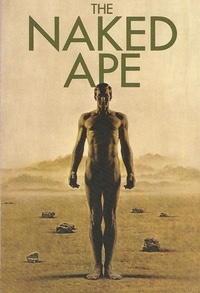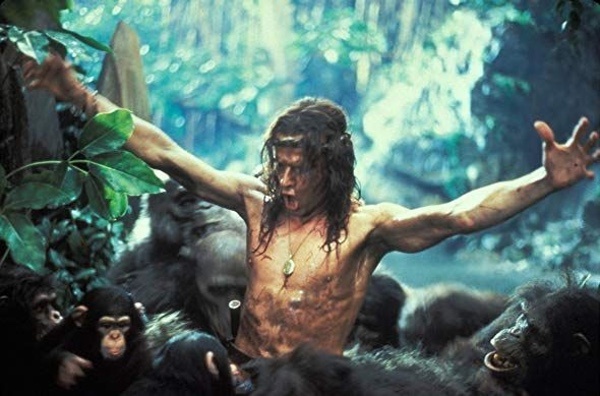My dad’s bookshelf — the one in the living room, not the one in my parent’s bedroom — didn’t have a selection of what you would call X-rated books.
But one day I came across (accidentally) a book by an English zoologist named Desmond Morris that had a picture of a naked man on the cover. The title was, The Naked Ape: A Zoologist’s Study of the Human Animal.
This struck me as unusual, because most of my dad’s books and magazines (in the living room) had pictures of fish or big game animals on the cover. So, being a teenager attracted to unusual books, I proceeded to read Mr. Morris’ book.
 Being an adolescent at the time, I would have preferred a picture of a naked female on the cover, but you can’t always get what you want.
Being an adolescent at the time, I would have preferred a picture of a naked female on the cover, but you can’t always get what you want.
The first thing I had to get my head around was the idea that a human could be classified as an animal. Growing up, I had formed the impression that “animals” were creatures who lived in zoos, or who appeared on the covers of hunting and fishing magazines.
My exposure to the Bible also provided indications that humans were something different from, and superior to, “animals”, except for the fact that they tended to kill or enslave one another at the slightest provocation, starting with Cain and on down the line.
Desmond Morris, meanwhile, seemed to consider humans to be just another species of animals. He had been the curator of mammals at London Zoo, but he was apparently more interested in the animals outside the cages . Yes, homo sapiens were a very intelligent species of animal, and also an animal with unusually neurotic tendencies, especially around sex… but still, an animal.
In fact, an ape. An ape that had lost almost all its body hair and was, thus, naked. This was a new idea to me, that “naked” could mean something other than “didn’t have any clothes on.”
Turns out there are 193 species of monkeys and apes, and we’re the only ones without a covering of hair. That could easily have led to an inferiority complex, but instead we took it as a sign of superiority.
Morris attributed the superior physical attributes of the human ape — the proportionately larger brain, the proportionately larger reproductive organs, the opposable thumb, and so on — to evolution. Evolution being a popular idea in those days.
We were a better version of an ape. But still, we were animals.
The closest thing to a “human animal” in my experience was the hero in the old Tarzan movies, which tended to portray the character as “Lord of the Apes” without showing him completely naked. (Where the heck did he get that loin cloth, anyway?)
Nor did they show Jane as naked. (I bet they would nowadays.)
In 1984, a more modern version of the Tarzan story hit the movie theaters, Greystoke: The Legend of Tarzan, Lord of the Apes. Turns out, Tarzan was actually named John, and was heir to the Scottish title of “Earl of Greystoke”. But in the end, he didn’t like drinking tea at 4 o’clock, or wearing European clothes, and he returned to the jungle, to presumably reclaim his title there of “Lord of the Apes”.
Jane stayed behind in Scotland. Fully dressed.

We never learned if he ended up fathering some half-ape, half-human children… and if so, were they naked?
Of course, when you’re a teenager, you can tend to believe whatever you read in books and in newspapers. Some people never outgrow that tendency. (What’s even more disturbing is that some people believe what they read online.)
Fortunately, I eventually realized that Desmond Morris was just a frustrated zoologist, and that none of his theories about the evolution of humans — from apes — were nearly as appealing to the true story, which is that we were made in God’s image… and we’re naked… because God is naked.
Underrated writer Louis Cannon grew up in the vast American West, although his ex-wife, given the slightest opportunity, will deny that he ever grew up at all. You can read more stories on his Substack account.

